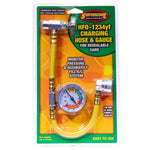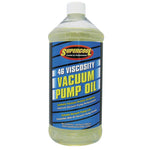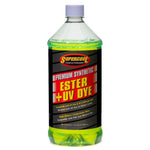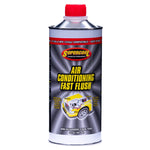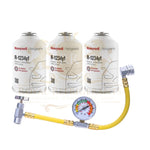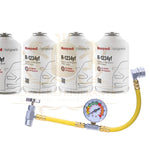You have no items in your shopping cart.
Everything You Need to Know About Cylinder Refrigerant for HVAC and Automotive Applications
In the HVAC and automotive industries, refrigerants are essential for delivering efficient cooling and maintaining optimal system performance. However, refrigerants cannot be transported, stored, or used directly without proper containment. This is where cylinder refrigerants come into play. These specially designed containers ensure safe handling, storage, and delivery of refrigerants across a wide range of applications. Whether you're servicing air conditioning systems, recharging automotive AC units, or installing new HVAC equipment, understanding cylinder refrigerants is crucial for both safety and efficiency.
This article explores everything you need to know about cylinder refrigerants, including their types, uses, safety considerations, and best practices for HVAC and automotive applications.
What Is a Cylinder Refrigerant?
A cylinder refrigerant refers to a pressurized container specifically designed to hold and transport refrigerant gases or liquids safely. Because refrigerants operate under high pressure and require careful handling, these cylinders are engineered to meet strict safety and regulatory standards. They are typically made of steel or aluminum and are built to withstand the internal pressure of the refrigerant stored inside.
Cylinder refrigerants are used in various settings, including residential and commercial HVAC systems, automotive air conditioning systems, refrigeration units, and industrial cooling applications. They come in different sizes and capacities depending on the type of refrigerant and the requirements of the system.
Types of Refrigerant Cylinders
There are several types of refrigerant cylinders available, each serving a specific purpose in the handling and use of refrigerants:
1. Disposable Cylinders
These are single-use cylinders designed for one-time use and are typically lighter and more affordable. Once emptied, they cannot be refilled and must be properly recycled or disposed of according to environmental regulations. Disposable cylinders are common for small-scale jobs, automotive applications, or when using a specific quantity of refrigerant.
2. Refillable Cylinders
Refillable cylinders are built for long-term use and can be refilled multiple times with refrigerant. They are constructed from durable materials and undergo regular testing to ensure safety. Refillable cylinders are often used in commercial and industrial HVAC servicing, where large volumes of refrigerant are required.
3. Recovery Cylinders
Recovery cylinders are specially designed for collecting and storing used refrigerants from systems during maintenance, repairs, or retrofits. These cylinders are built to handle different refrigerants without contamination and are essential for environmental compliance and proper refrigerant recycling.

Sizes and Capacities
Refrigerant cylinders are available in a variety of sizes to meet different needs:
- Small cylinders: 1 lb to 30 lbs – commonly used in automotive AC servicing or small HVAC systems.
- Medium cylinders: 50 lbs to 125 lbs – ideal for commercial HVAC applications.
- Large cylinders: 240 lbs and above – used in industrial applications or for bulk storage.
The correct size depends on the refrigerant type, system size, and application requirements. Choosing the right cylinder ensures efficient refrigerant handling and minimizes waste.
Applications of Cylinder Refrigerants in HVAC
In HVAC systems, refrigerant cylinders are essential for several key tasks:
- Charging new systems: During installation, technicians use refrigerant cylinders to fill systems with the appropriate refrigerant charge.
- Servicing and maintenance: Cylinders supply refrigerant to systems during repairs or routine maintenance.
- Refrigerant recovery: When replacing or repairing components, technicians recover refrigerant into designated cylinders to prevent leaks and comply with environmental regulations.
Whether working with common refrigerants like R-410A, R-407C, or newer alternatives such as R-32 and R-454B, cylinder refrigerants provide the safe containment needed for efficient system servicing.
Applications of Cylinder Refrigerants in Automotive Air Conditioning
In automotive air conditioning, cylinder refrigerants are widely used for system recharging and maintenance. Technicians rely on portable cylinders to refill systems with refrigerants such as R-134a or R-1234yf. These cylinders are typically smaller, lightweight, and designed for easy handling in workshop environments.
Cylinder refrigerants are also crucial in retrofitting older automotive systems with newer, environmentally friendly refrigerants. They ensure accurate charging and safe handling throughout the process, preventing leaks and maintaining system efficiency.
Safety and Handling Considerations
Working with cylinder refrigerants requires careful attention to safety and regulatory compliance. Here are key safety guidelines to follow:
- Proper storage: Store cylinders upright in a cool, dry, and well-ventilated area away from direct sunlight and heat sources.
- Pressure checks: Always verify cylinder pressure before use to ensure safe handling.
- Avoid mixing refrigerants: Mixing refrigerants in a single cylinder can cause dangerous reactions and damage equipment.
- Use protective gear: Wear safety goggles and gloves when handling refrigerant cylinders to avoid contact injuries.
- Follow transportation regulations: Transport cylinders according to local and international safety standards to prevent leaks or accidents.
Adhering to these safety practices helps protect technicians and ensures compliance with environmental laws.
Environmental Considerations
As environmental regulations tighten worldwide, the safe handling and disposal of refrigerants and their cylinders are more important than ever. Used or empty cylinders must be properly recovered, recycled, or disposed of to prevent the release of high-GWP refrigerants into the atmosphere. Many countries require certified recovery and recycling processes for both refrigerants and their containers.
Using recovery cylinders and following proper disposal practices contribute to sustainability efforts and regulatory compliance.
Conclusion
Cylinder refrigerants are an essential part of modern HVAC and automotive air conditioning systems. They provide the secure containment needed to store, transport, and handle refrigerants safely and efficiently. Available in various types and sizes, refrigerant cylinders are used throughout the lifecycle of a system — from installation and maintenance to recovery and disposal.
Understanding the types of cylinders, their uses, and best safety practices is crucial for technicians, service professionals, and anyone working with refrigerants. As the industry moves toward more environmentally friendly refrigerants and stricter regulations, proper handling and disposal of cylinder refrigerants will continue to play a vital role in ensuring system performance, safety, and environmental protection.
 English
English

